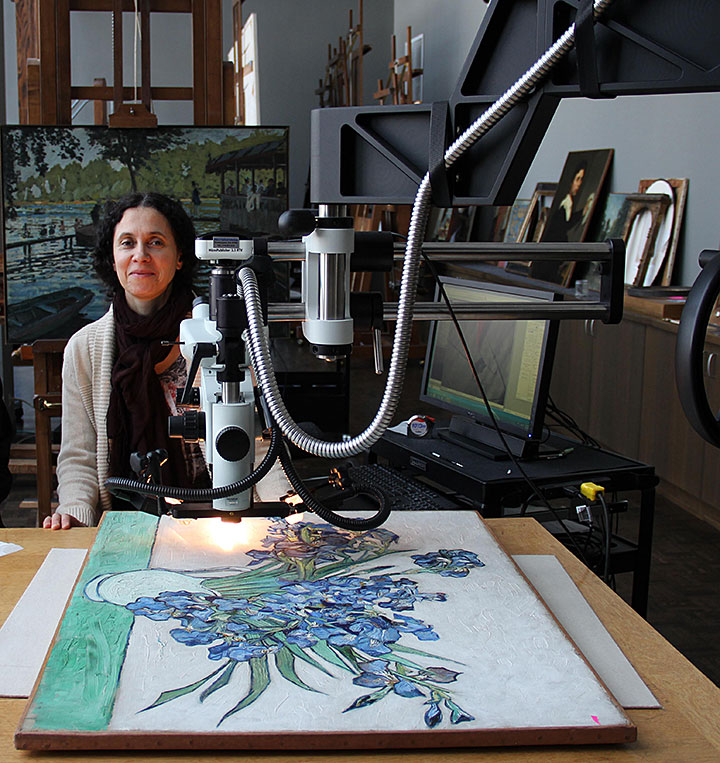BWIS Speaker: 'Conserving, Preserving, and Understanding the Materials and Techniques of Works of Art' 11/14
November 4, 2019
Silvia Centeno, a research scientist in the Metropolitan Museum of Art’s (The Met) Department of Scientific Research, will discuss what interdisciplinary teams of scientists, conservators, and art historians at The Met, and colleagues from other institutions, have begun to unravel about the permanence of artistic materials in iconic works of art by Rembrandt van Rijn, Vincent van Gogh, Jan van Eyck, Adolph Gottlieb, Margareta Haverman, and others, at the U.S. Department of Energy’s Brookhaven National Laboratory, on Thursday, Nov. 14, at 4 p.m. in the Biology Seminar Room (Bldg. 463). The talk is sponsored by Brookhaven Women in Science.
Add This Event to Your Calendar
The lecture is free and open to the public. Visitors age 16 and over must bring a photo ID.
Understanding complex processes is crucial for determining why paintings look the way they do, whether the surface texture, opacity, and depth of tone of paint layers are as the artist intended or are the result of changes that have occurred over time, and for making decisions regarding the conservation and preservation of the works. As soon as an artist applies paint to canvas or another support, complex chemical and physical processes start to take place as the film changes from a viscous medium to the cross-linked network that constitutes the dry paint. The composition of the pigments and of the organic binding media, as well as the stratigraphy of the paint and presence of other components in the mixture, considerably affect the drying process. Environmental conditions such as light, temperature, relative humidity, and the presence of pollutants play a key role in how paint films age and degrade. Conservation treatments with aqueous or organic cleaning agents, or those that involve heat, may also trigger various modes of deterioration.
Centeno will discuss the implications of these processes for the conservation and preservation of the works affected, and the challenges that still lie ahead, as well as her personal experience as a woman in the science, technology, engineering, and math fields in South America.
Centeno is responsible for investigating artists’ materials and techniques and deterioration processes in paintings, photographs, and works of art on paper. She has authored and co-authored more than 80 peer-reviewed articles and book chapters in scientific, conservation, and art history publications, in a range of topics including early pigment- and platinum-based photographic processes, daguerreotypes, heavy-metal soap deterioration in oil paintings, early lithographic inks, and Renaissance, 19th century, and modern paintings.
She has lectured in graduate and undergraduate programs at the New York University Institute of Fine Arts Conservation Program, the Winterthur Museum-University of Delaware Art Conservation Program, the Bard Graduate Center, and the Pratt Institute in New York, among others. Since 2012, she has been a principal investigator in a team of scientists that employs solid-state NMR and other methods to understand aging and degradation processes in oil paintings, funded by grants from the U.S. National Science Foundation. She received a PhD in chemistry from Universidad Nacional de La Plata, Argentina, and started at The Met as an L. Frohlich Fellow to study unusual gilding techniques in Pre-Columbian metalwork.
This talk is for scientists and non-scientists. Refreshments will be available at 3:45 p.m. You can read more about Centeno’s collaboration with Brookhaven Lab scientists in this January 17, 2018, article “Pigments in Oil Paintings Linked to Artwork Degradation,” and in this September 26, 2018, article “PubSci Explores the Intersection of Science and Art.”
2019-16883 | INT/EXT | Newsroom










